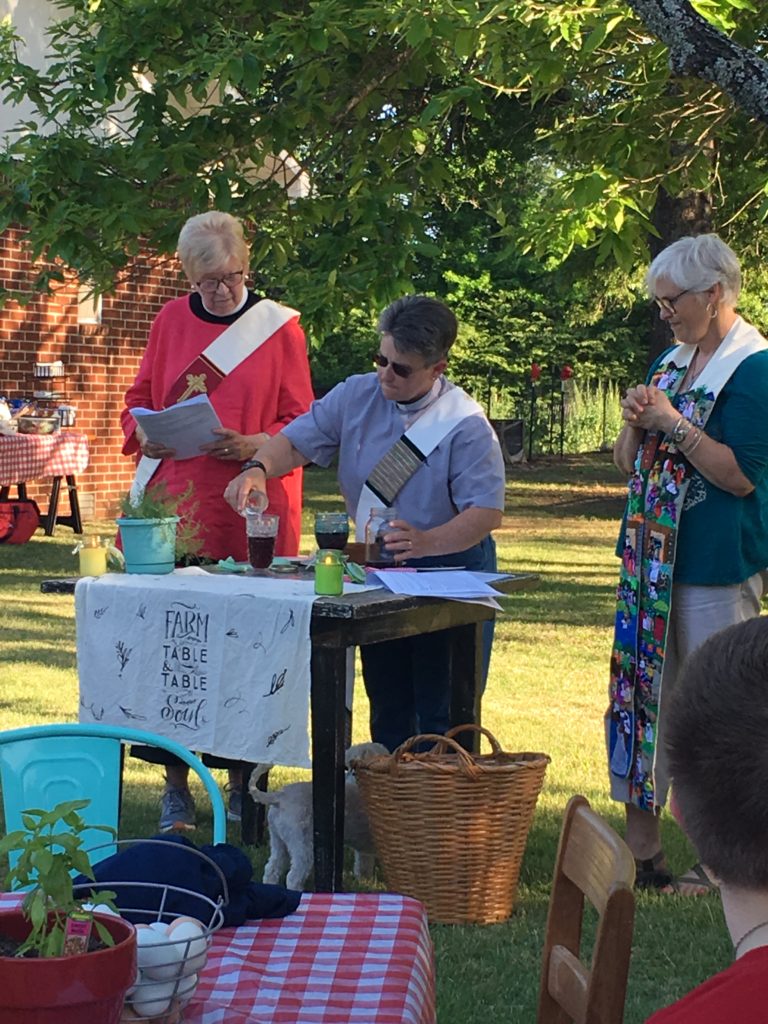
I don’t know exactly when it began, when the seeds were planted for my love of outdoor church, but I think it probably began with VBS, with the brown bag picnics we would have on the lawn on the last day. In my memory those days are full of friends, laughter, food, and singing – and church. All my favorite things together.
Or maybe it was the annual fish fry at the Presbyterian campgrounds that my grandparents took me too. More food, laughter, fishing, lots of singing, prayers of thanksgiving for the earth and for the bounty.
Of course it might of been that summer in Clearwater, Florida when my parents were part of a rag-tag church startup that often met at a local park, holding worship – and lunch – under a rented pavilion. Once we moved to Southeast Alaska outdoor church happened less often – but occasionally, maybe once or twice a year, – the weather would be so fine, so beautiful, that my dad couldn’t help himself. We would arrive at church to find that he had set up folding chairs – and a pulpit- in the parking lot, right where anyone driving by could see. We couldn’t always hear what was being said, but we could take in the beauty all around us – the mountains, the eagles, and the warm sun thawing out our winter bones.
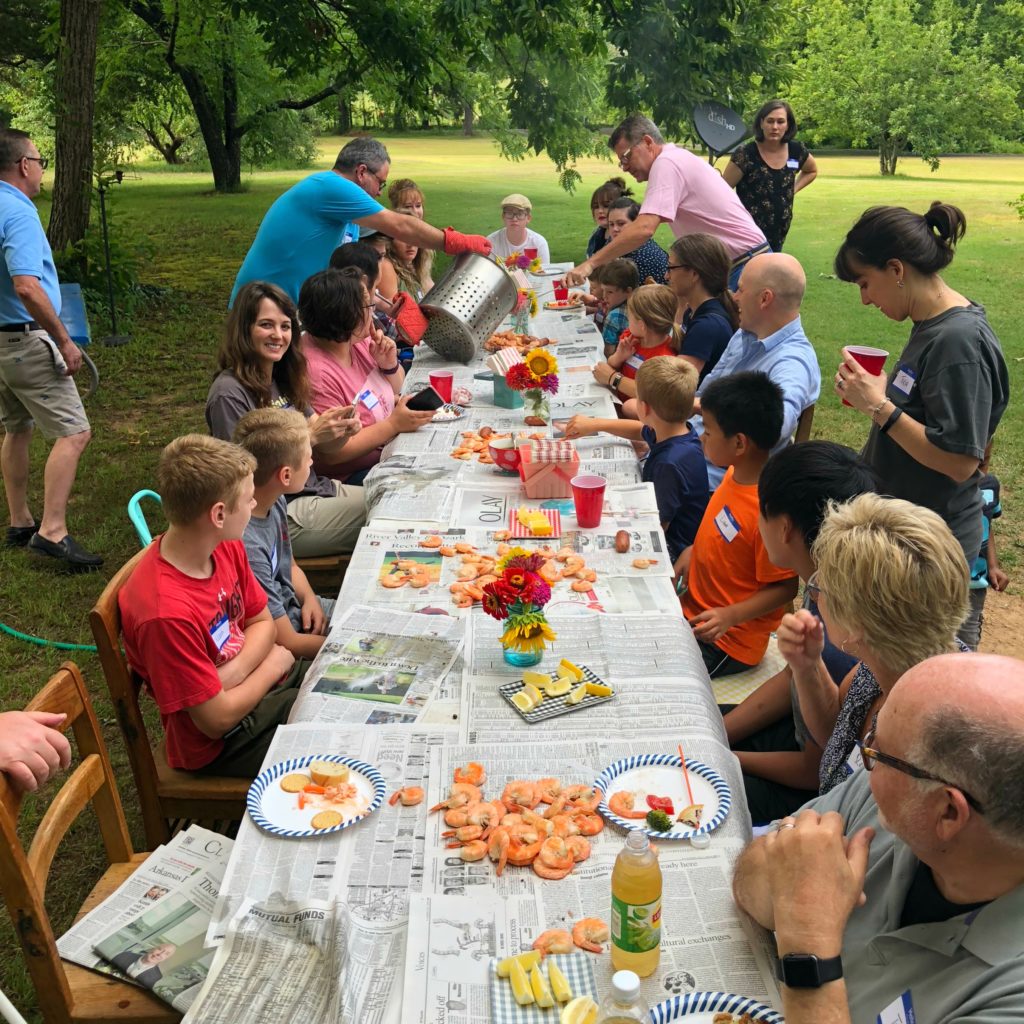
Now, fast forward a couple of decades, to the moment when Nathan and I knew we were being called to the land. We knew that what we were being led into was a small farm of our own – for what purpose we had no idea – but we knew we were being pulled as strong as the moon to the tide, to an agrarian-based life. . In the ten years that passed between that moment and when we actually signed the papers on Preservation Acres, many other things had occurred, not the least of which was we became Episcopalians.
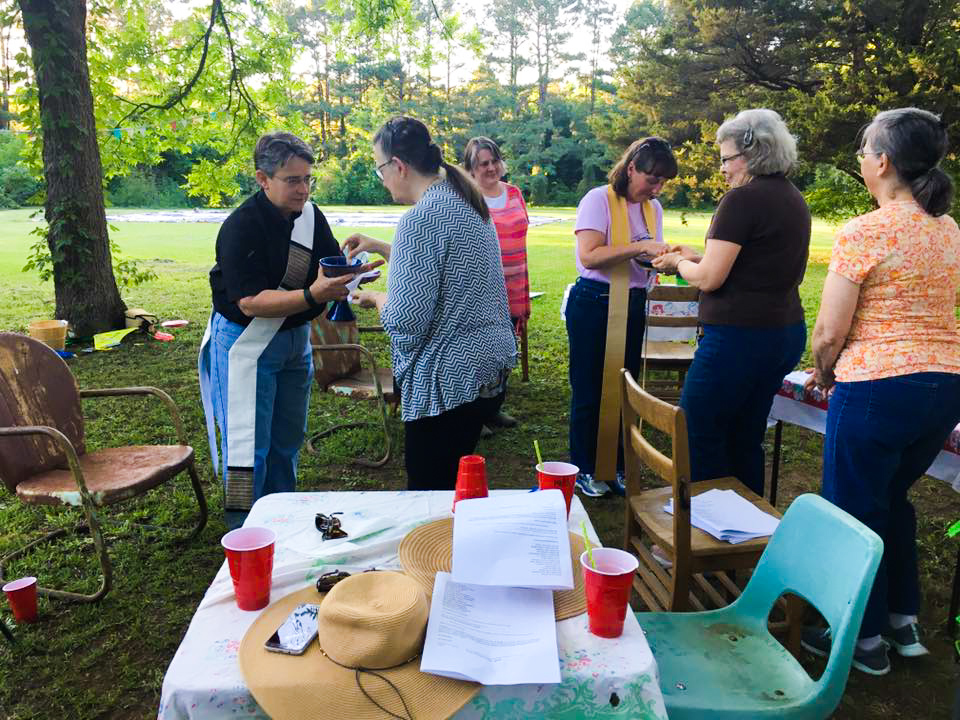
The Episcopal Church is part of the Anglican Communion, which of course flows out of The Church of England. As Anglicans, a large part of how we organize our lives and our worship -personally and corporately – comes from two places, the Liturgical Calendar and our book of prayer, both of which point us to blessing and caring for the land, for those that work the land, and for the bounty it provides. For us, this call to be good and faith-filled stewards of the earth is part of what it means to follow Jesus, and to join with God, living into the prayer thy kingdom come, thy will be done here as it is in heaven.
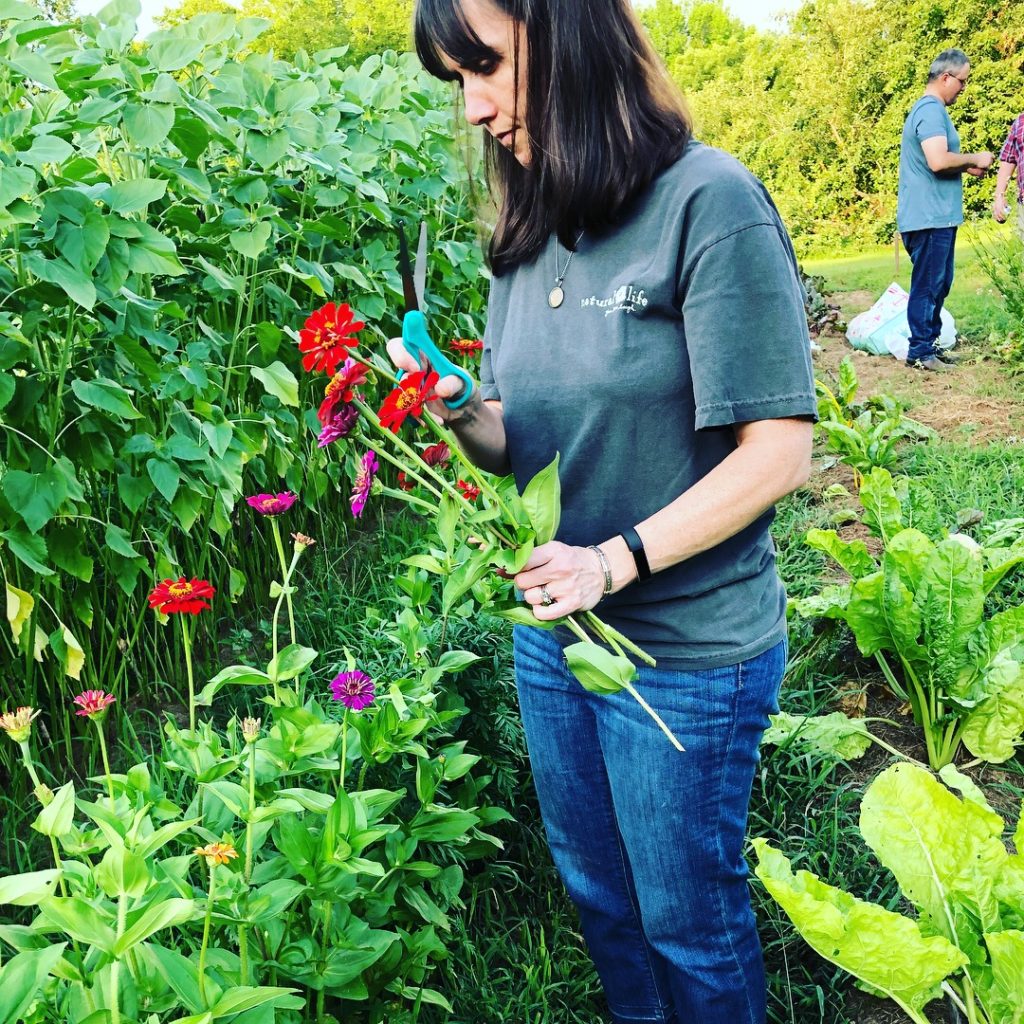
If y’all have been around me at all then you know I am head-over-heels in-love with the Liturgical (or Church Year) Calendar, and on the calendar there are days set aside for blessing gardens, farms, and other agri endeavors. These days are called Rogation Days. In The Episcopal Church these officially take place about two weeks before Pentecost Sunday- but can be celebrated at the beginning of any planting season. In the fall Michaelmas, the feast of St. Michael and all the Archangels, is often associated with the harvest. Within the Book of Common Prayer and other prayer books there are multiple prayers related to care of creation, planting, harvesting, and so forth. The Church of England also has an extensive list of agriculture prayers, including The Blessing of the Plough which I particularly love. As Anna Woofenden points out in her book, This is God’s Table, in England, the understanding of what a parish is extends beyond just a building, and covers a whole geographical area. Therefore – the priest, ministers, and church members – are to care for the whole, not just the particular. The care of land goes beyond the grounds of the church property itself, and beyond the people who come in their doors. This care and responsibility flows deep and wide throughout the entire area.
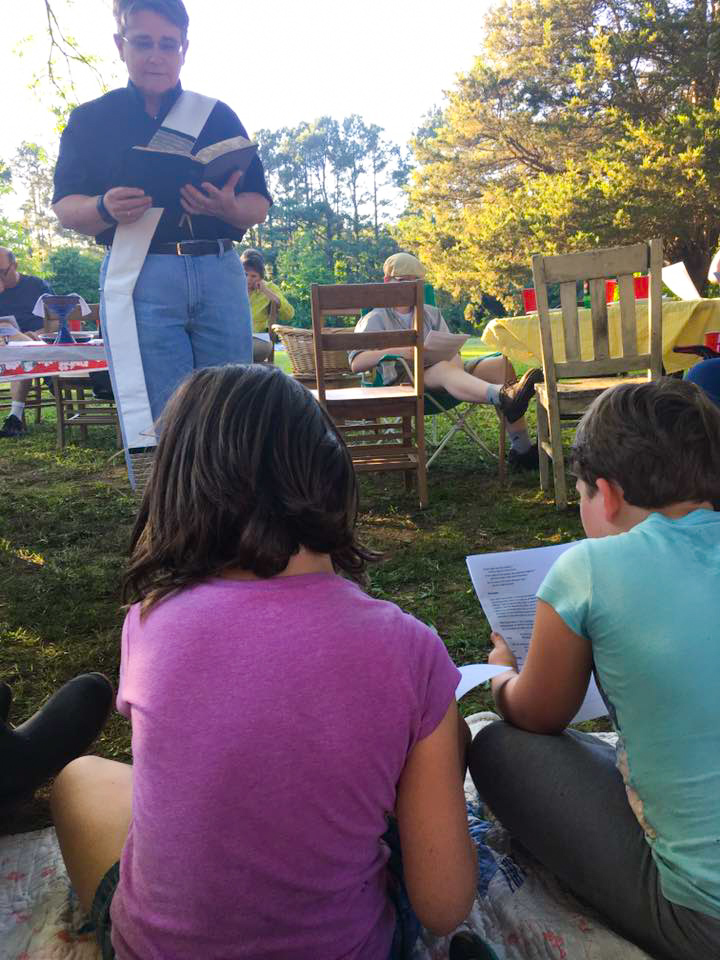
All of this is a really longwinded way of saying, that as soon as we had a farm, I wanted to have church here. I wanted to live like that English priest, pushing the boundaries beyond the walls of a building, and connecting faith to the land and relationships that sustain us.

And so we did. We had church here. We started with our House/Farm Blessing and eventually we would have two Ascension Day Eucharist (which falls at the end of the traditional Rogation Days), one wedding, multiple youth group Advent celebrations, and countless church Small Group meetings here. And those were just the official gatherings. Unofficially, the holy is always buzzing around these parts – there are the sacred conversations had on the porch swing, the prayers said by the pond, the thanksgivings given in the garden or when a new chicken hatches, or the bread broken between our family on an ordinary Tuesday night.
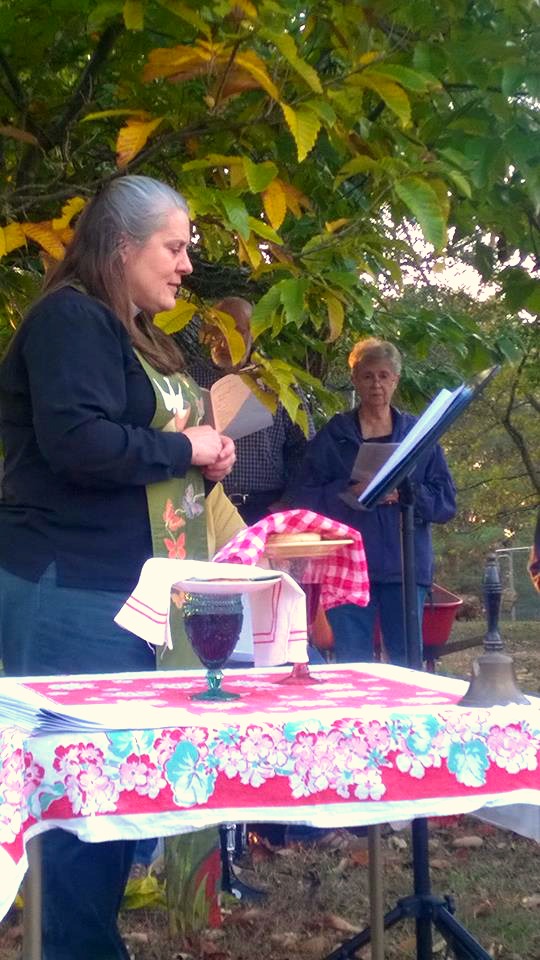
Hopefully, as we move out of quarantine, we will be able to have more- more blessings, more harvest celebrations, more feasting, more weddings, more Eucharist, more Small Group, more Agape Meals – and maybe even someday more singing – on the farm. Maybe we will be able to offer Preservation Acres again as a place to experience the unique beauty that comes from the farm to table/ table to soul combination. I hope so.
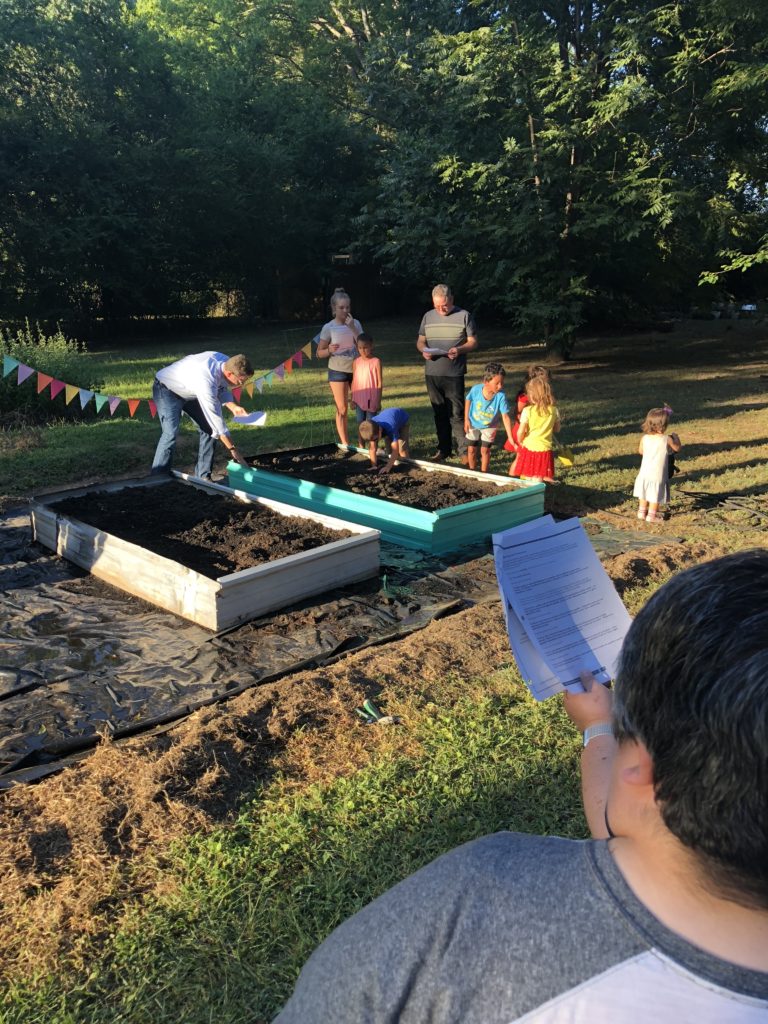
The Good News is that this way of worshiping isn’t limited to our farm. It can be done anywhere – on a church lawn, in the forest, on the beach, on a patio, or in a park, or wherever three or more are gathered (and for now 6 feet apart) out in creation.
As we continue to navigate life in the time of COVID-19, I have a feeling more and more holy gatherings will take place out of doors out of pure necessity, and thankfully there are tons of resources to help churches and communities navigate this way of being church, for both lay and clergy-led groups. Below you will find a list of my favorites – articles, books, curriculum, groups, and liturgies for doing church in the great outdoors.
While we may not be able to practice some of the more traditional elements of a faith-filled gathering, I think there are ways to do some of these things creatively – for a meal everyone could bring their own meals, brown bag style. For seating people could bring their own picnic blankets or camp chairs and then spread apart as needed. I imagine there would be waving and peace signs instead of handshakes or hugs, and of course no singing (for now). And this way of being may work best in groups of 10-20 people, instead of 50 or 100 or 500.
Whatever happens, whatever your reality, I hope that these resources and ideas will encourage and inspire you in a time when it is easy to feel discouraged and at a loss about “what comes next?” Maybe what comes next is breaking bread on the beach with Jesus. Or in the garden, with our our neighbors, 6 ft apart.
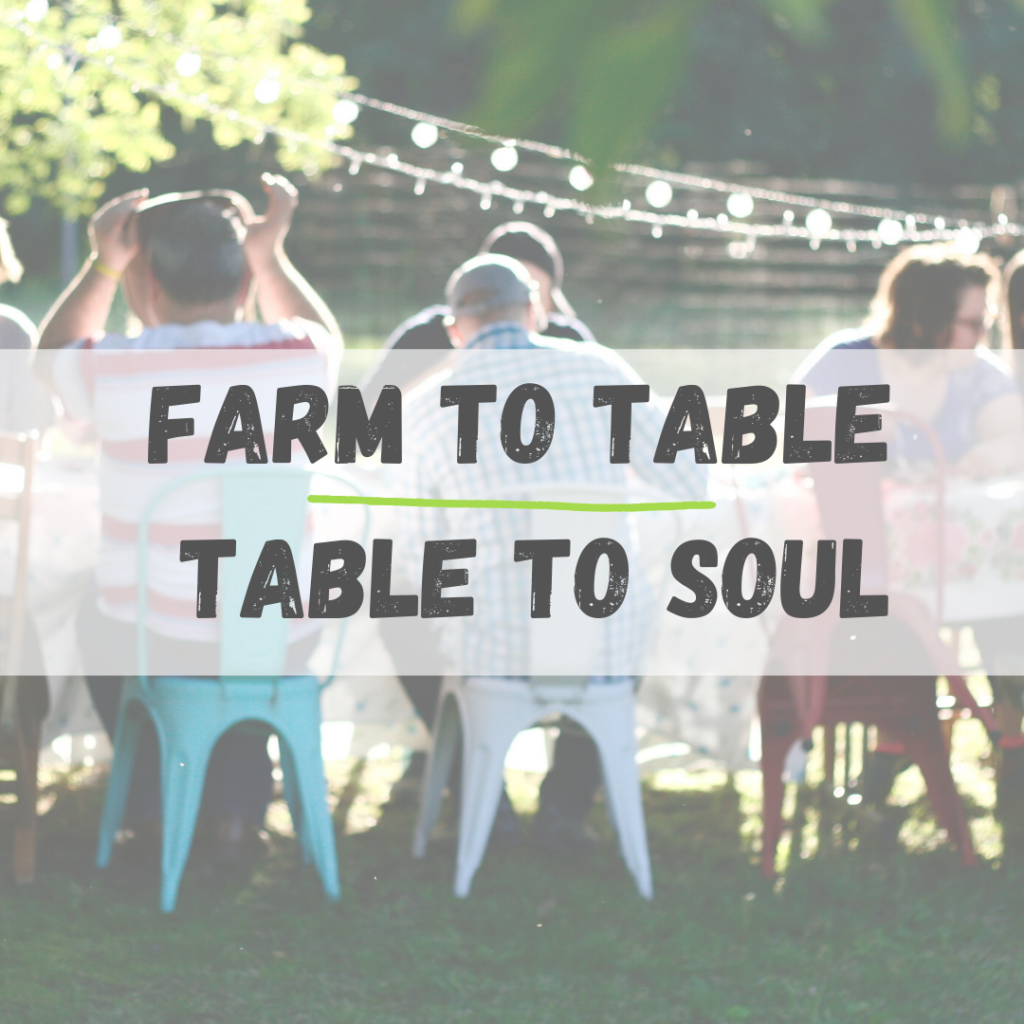
Church Outdoor Resources
For Kids
Abundant Life Garden Project from Episcopal Relief & Development. There is both a Sunday School and VBS version of this curriculum. The majority of it could be done out of doors, some could be done virtually.
Books
This Is God’s Table: Finding Church Beyond the Walls by Anna Woofenden – It’s the story of what happens when people garden, worship, and eat together—and invite anyone and everyone to join them.
Resurrection Matters: Church Renewal for Creation’s Sake by Nurya Parish – Resurrection Matters is a fruitful study and action guide for any church that owns property and in which groups gather together to grow as disciples of Jesus Christ.
Soil and Sacrament: A Spiritual Memoir of Food and Faith by Fred Bahnson – Part spiritual quest, part agricultural travelogue, this moving and profound exploration of the joy and solace found in returning to the garden is inspiring and beautiful.
Harvesting Abundance; Local Initiatives of Food and Faith – Brian Sellers-Petersen – Discover where the movement is alive and growing, and find ideas for starting your own “food and faith” initiative in your own backyard, roof, or front porch.
Podcast
The Food & Faith Podcast – Conversations from the soil and around the table. With Anna Woofenden and Sam Chamelin.
Liturgies
An Ascension Day Picnic Eucharist and Rogation Day Blessings – A service that can be adapted for any Rogation Day celebration
A Harvest Celebration – for the end of a growing season, with or without Eucharist
An Agape Meal – These are are two liturgies. The first is called “Liturgy for the Love Feast” and is adapted from the Iona Abbey Worship Book with reference to the United Methodist Book of Worship. This liturgy can be used as any time. The other is from the Book of Occasional Services of The
Episcopal Church, approved at the 2018 General Convention. This one is entitled “Agape for Maundy Thursday.” Its tone is more solemn as befits the events of this, the last night of Jesus’ physical life on earth.
Sites
Wild Church Network – A network of churches and communities who worship outside in a variety of ways.
Cultivate – A gathering of information regarding the faithful food movement in The Episcopal Church.
The Christian Food Movement- an ecumenical site with a ton of resources
Groups
Agrarian Ministries of the Episcopal Church – Connect with others doing agri ministry of any kind (from personal to commercial) who are in community with the Episcopal tradition in some way.
Wild Church Network Group – Connect with others doing church out of doors and find great resources and tips
Videos
Starting a Small Group
Small Group FAQ Video – Some churches might have to begin meeting in smaller groups before they can meet as a whole. This video might help answer some questions about how that works.
I know there are many more resources out there and I am sure each of these will lead to dozens more once you begin to investigate. And as much as I love Farm Church (what I call what we do here) I also miss the buildings and the traditions. My hope is that someday we can again have both, and that until then we don’t give up in finding ways of gathering together, breaking bread, and continuing in the apostles teaching.


Thank you for this beautiful article. My Priest shared it with me. I write a Creation Care blog in our Church Enews.
Please list me as a recipient of Jerusalem’s blogs